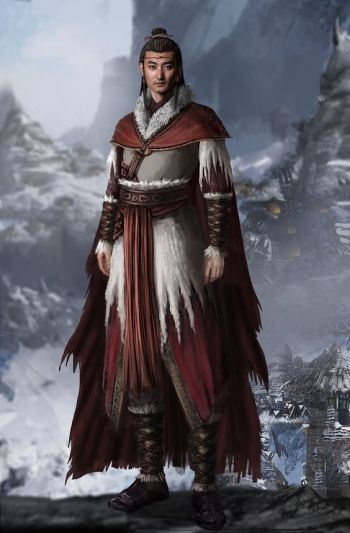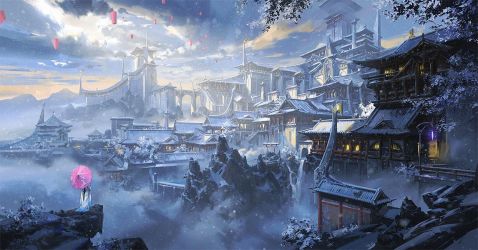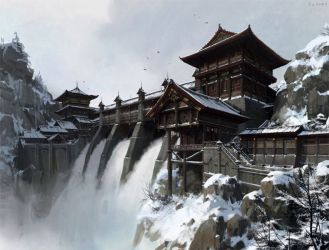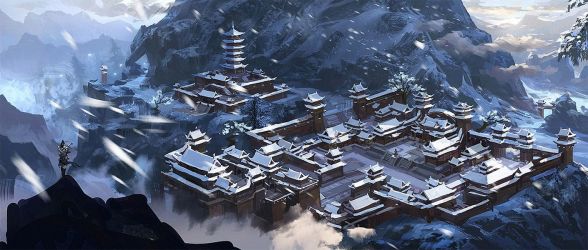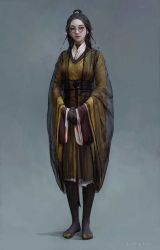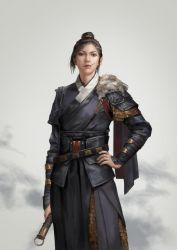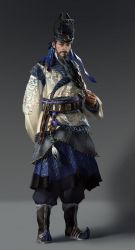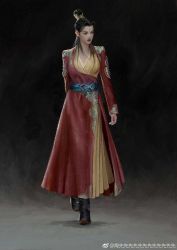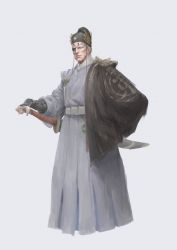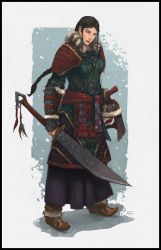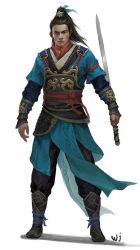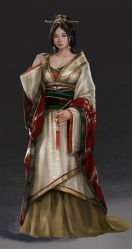Changes: Sim Layout, City-States, RPCSS Factions, and Storyline. Read More
Difference between revisions of "Khonzhou"
From The Citadel
| Line 1: | Line 1: | ||
[[image:Khonzhou_01.jpg|350px|right]]''Khonzhou is intended to be a multicultural asian city that borrows heavily from Mongolia and Northern China. Further fantasy elements have been gleemed from The Dothraki, The Last Airbender, and the Empire Series by Raymond Feist.[[category:Character]][[category:TOC]] | [[image:Khonzhou_01.jpg|350px|right]]''Khonzhou is intended to be a multicultural asian city that borrows heavily from Mongolia and Northern China. Further fantasy elements have been gleemed from The Dothraki, The Last Airbender, and the Empire Series by Raymond Feist.[[category:Character]][[category:TOC]] | ||
| − | + | Khonzhou lies in the northeastern corner of the Essealas continent. The city is an architectural marvel, which like most of the northern cities, covers most of the mountainside. Below the city is a bustling sea port and lower villages. The steppes lie between the dark pine forests of Halberg and the murky woods of Fendahl. Complex stone buildings with multiple tiled hip rooves soar many towers over narrow streets. Beautifully polished and lacquered woods with paper dividers create elegant interiors. | |
| + | |||
| + | Fish, soybeans, and rice are a staple of cuisine in Khonzhou, only one of which is produced locally. [[Talk: Khonzhou|Tribute]] in the form of guaranteed trade has been established with Fendahl for soy and other beans, and rice from Tenyisia. In exchange, Khonzhou exports both northern caught fish such as tuna and swordfish and cattle from the steppes. | ||
| − | |||
*What is the architecture like | *What is the architecture like | ||
*How do they gather food | *How do they gather food | ||
Revision as of 18:17, 10 January 2021
Khonzhou is intended to be a multicultural asian city that borrows heavily from Mongolia and Northern China. Further fantasy elements have been gleemed from The Dothraki, The Last Airbender, and the Empire Series by Raymond Feist.
Khonzhou lies in the northeastern corner of the Essealas continent. The city is an architectural marvel, which like most of the northern cities, covers most of the mountainside. Below the city is a bustling sea port and lower villages. The steppes lie between the dark pine forests of Halberg and the murky woods of Fendahl. Complex stone buildings with multiple tiled hip rooves soar many towers over narrow streets. Beautifully polished and lacquered woods with paper dividers create elegant interiors.
Fish, soybeans, and rice are a staple of cuisine in Khonzhou, only one of which is produced locally. Tribute in the form of guaranteed trade has been established with Fendahl for soy and other beans, and rice from Tenyisia. In exchange, Khonzhou exports both northern caught fish such as tuna and swordfish and cattle from the steppes.
- What is the architecture like
- How do they gather food
- Personality
- What is their personality
- How do they organize themselves - The Eight Banners
- Which city-states do they like and dislike
- What is their political mindset
- Appearance
- What is their physical appearance
- How do they dress
- Traditions
The Jurchen follow a spiritual path known as the five ways or the five paths. This path blends their Hunnic pantheon with a more recent philosophy. The synthesis is an elegant and complex practice which tie the five elements to medicine, philosophy, divination and daily life. The five elements are earth, fire, wood, water and metal.
Toghtoga is the red god of war and the underworld. He is associated with metal. Samga is the goddes of fire associated with the sun, change, and chaos. Ebegei is the earth mother who brings the harvests and is known as the sleeper without dreams. Batukhan is the god wood and the protector of the sky. Dagasi is the moon goddess who rules over water, soft changes, healing and unity.
All five gods are worshiped equally but also based on the concept of generating and reducing; one might for example pray to the earth god to keep war from forming, pray to the metal god for success in war, and the god of water to end war.
This practice of wuxing is how the Jurchen keep their inner balance and understand their place within the world, this inner center is known as the waal. The Jurchen believe in reincarnation and intend by their actions in this life to earn a better life in their next incarnation. Burial customs include offerings to the gods for the next evolution, and burial goods to remind the person of their current station. Warriors and nobles have the right to die by throwing themselves on their sword, while the lowest and meanest slave death is by hanging. Death by poison is considered a terrible and dishonorable death.
- Expanded Lore
- Further reading and links for the culture obsessed.
Small Council NPCs
| Role | Description |
|---|---|
Ruler |
|
Diplomat |
|
Warlord |
|
Coinmaster |
|
Spy Master |
